
Gone are the days when you had to drive to the nearest mall to buy a new pair of pajamas. Online shopping lets you buy those new pajamas in your pajamas. The only issue is getting your size right, and this is definitely easier said than done. Luckily, online shops offer increasingly detailed sizing charts that go way beyond standard letter or number sizing.
But even then, you’ve got to know how to measure your body correctly to get the fit and the look you imagine when you decide to purchase that coveted clothing item. So, in this article, we will teach you to take accurate body measurements at home.
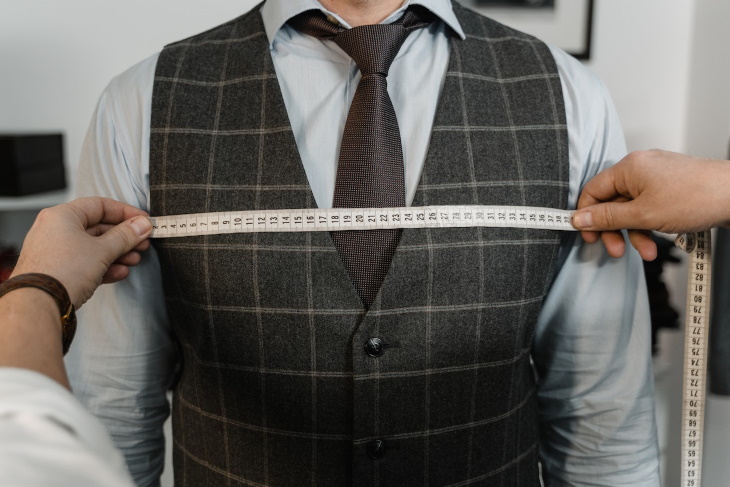
What should you wear as you’re measuring? Thin, close-fitting clothing and underwear are the best. For example, a tank top and a pair of leggings will work perfectly well for this task.
How to measure yourself:
Related article: 10 Guides for Clothing and Washing Tips
Although women’s and men’s measurements are not very different, there are a few specifics to keep in mind when taking measurements for women.
Bust
Unless you’re specifically looking for a garment to wear without a bra, or you’re shopping for a bra, keep the bra on when you’re taking clothing measurements. A heavily padded bra may distort the measurements a bit, but if that’s all you’re going to wear with the clothing for which you’re currently shopping, it’s important to account for that extra volume.
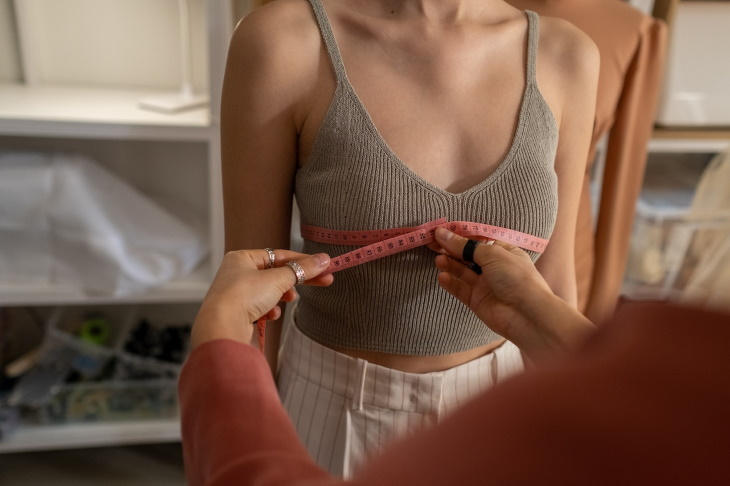
The bust measurement is the widest point of your chest. To measure, wrap the tape around your chest across both nipples. Make sure the tape is aligned on the sides and back.
When you’re shopping for a bra or bathing suit top, you’ll also need to know the underbust measurement (also known as the band). This measurement refers to the length of the band of a bra, and it’s taken by measuring around the ribcage directly under the breasts.
For US bra sizes, you’ll then need to add 4 inches for even numbers and 5 to odd ones to know your band size. For instance, if you measured 33.8, you round it up to 34 and then add 4 inches, so the band size is 38 inches.
Finally, when subtracting the bust size from the band size, you’ll get the cup size. As you likely know, these are measured in letters:
AA - ½ inch
A - 1 inch
B - 2 inches
C - 3 inches
D - 4 inches
E/DD - 5 inches
F/DDD - 6 inches
G - 7 inches
H - 8 inches
I - 9 inches
J - 10 inches.

Waist
You may have heard that the waist is at the same level as your belly button, but this is actually not always the case. Instead, most tailors define the waist as the narrowest part of the torso. The easiest way to find what is known as “the natural waist” is by standing up straight, then bending to the right, and then to the left. The points on the sides of the torso where your body creases are where you should measure.
If you prefer to wear skirts or pants lower than your natural waist, take a measurement of that specific level too.
Hips
Taking the hip measurement can also be a bit tricky, as this measurement refers to the widest point of the bottom, and not necessarily the hip bones. Bring your legs 6 inches apart and look in the mirror. Then turn to the side, finding the widest point of the bum. This is the level where you should measure.
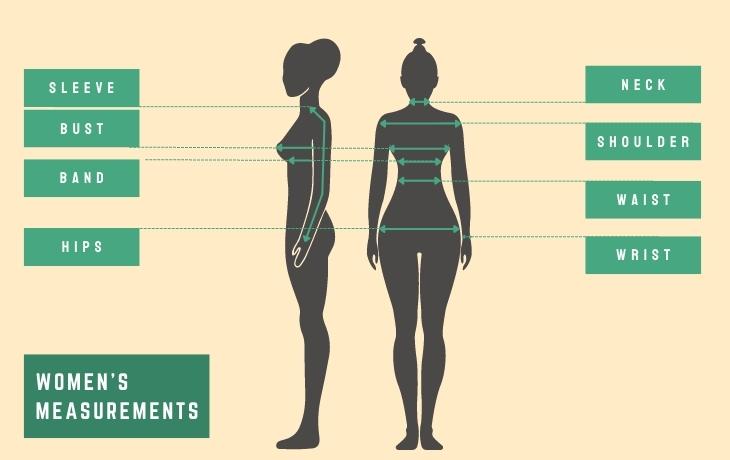
Find that pants dig in or feel uncomfortable when sitting? Then sit down while holding the tape to make sure that you’re not holding the tape too tight while you’re measuring.
Shoulder and sleeve measurements
Women's clothing rarely lists shoulder width and sleeve length, with outerwear and tailored clothing being the rare exceptions. Scroll down to the men’s measurement section for specific guidelines.
Men’s measurements can get quite specific, especially when it comes to button-down shirts or formal clothing. Here are the basic guidelines.
Sleeve
The sleeve measurement can be tricky to do on your own because it involves measuring from the middle of the back to the wrist. Therefore, it’s best to have a friend take it for you. If this is impossible, you can secure the tape in the middle of the back to free up one arm.
To take the sleeve measurement, put your palm on your hip so that your elbow is at a right angle. Now let your friend measure the length from your shoulder and down to your wrist. The tape should go over the shoulder and along the outer part of the arm.

Neck and wrist
You will find these parameters in shirt size guides. To get this measurement right, align the tape around the base of the neck, i.e. the place where the collar usually falls. Measure by circling the tape around the back of the beck and pulling the tape rather tight to take the measurement.
Wrist width refers to the diameter of the sleeve at the bottom. Measure by circling your wrist with a tape measure at the level where you want the sleeve to fall.
Shoulders
Taking shoulder measurements can be tough at first because it requires that you subtract the arm width. However, there’s a neat trick that will help you solve this issue. Wear a T-shirt or a button-down that fits well on your shoulders. Now, simply measure from one sleeve seam to the other at shoulder level. Understandably, this can be tough to do on your own, so we recommend that you ask for someone’s help with this measurement.
Related article: How to Launder and Care For 9 Common Fabrics
Chest
This measurement is much simpler for men - just feed the tape straight across the broadest area of the chest and measure. The easiest way to do this is by placing the tape measure in the middle of your chest and wrapping it around the back underneath the armpits.
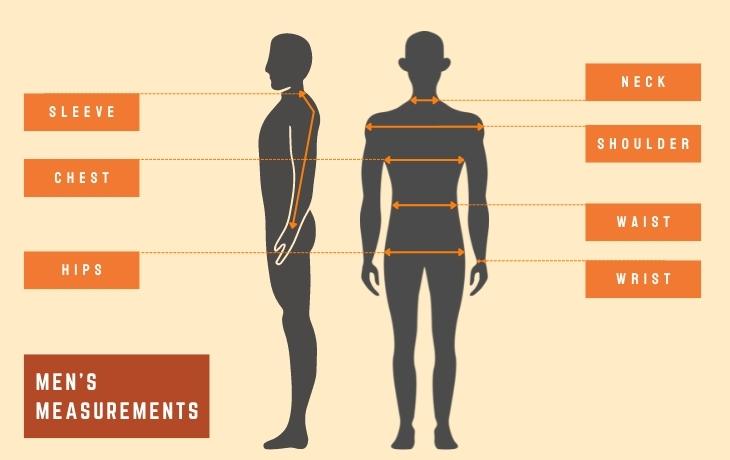
Waist
Measure at the narrowest part of the belly, or where your body creases when you bend to the sides. This is your “natural waist” point - the waist measurement for high-rise pants. If you prefer to wear low-rise pants, you can measure where you like pants to fall.
Hips
This measurement is identical in men and women. Place legs 6 inches apart and find the point where the hips are the widest. Measure around your hips and buttocks in a straight line across.
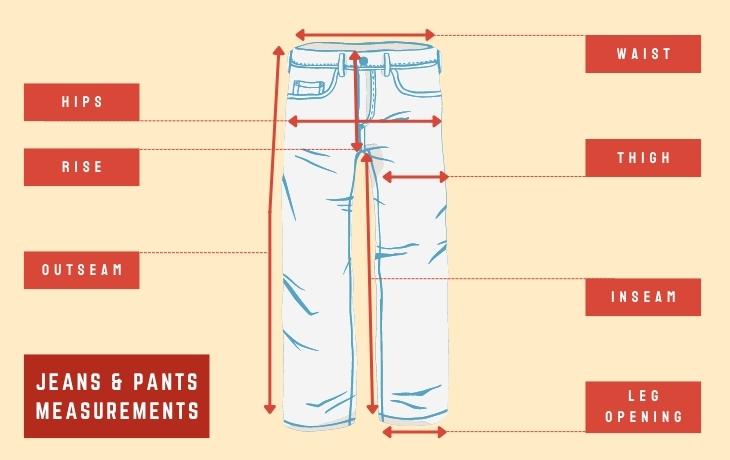
Inseam and Outseam
When determining the length of any pants, the key parameters are the inseam and the outseam. The inseam is the length from the middle of the crotch to the ankles (or wherever you want the pants to fall). If you already have a pair of pants with the perfect length, you can save yourself the acrobatics of inseam calculation by simply measuring the inseam of the pants instead.
The outseam, meanwhile, is the full length of the pants - from the waist along the outer side of the leg all the way to the ankles (or wherever you want the pants to fall).
Rise
As uncomfortable as they are, crotch measurements are extremely important for buying a truly comfortable pair of jeans. In simple terms, the rise is the distance from the middle of the crotch to the top of the waist. Some pants have a low rise, whereas others have a medium or high rise; they usually range between 7-12 inches.
If you find that jeans often bunch up in the crotch area, you likely need a lower rise; conversely, if they dig in, look for a pair of jeans with a high rise.
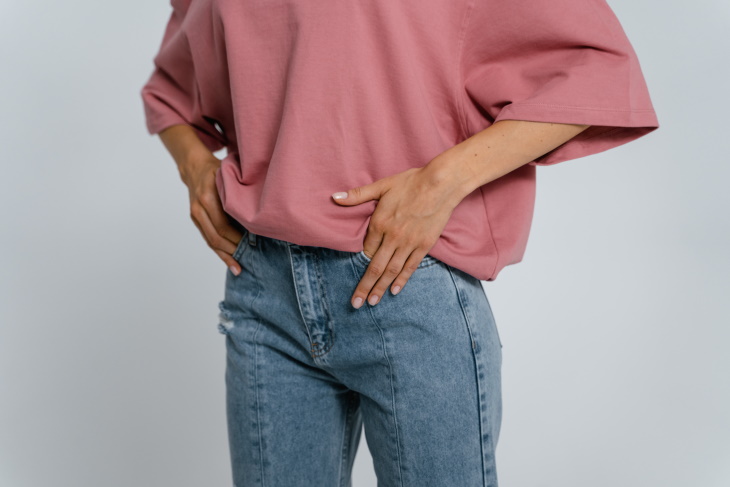
So how do you measure the rise? Place the end of the tape at waist level in front, and then loop the tape measure through the legs and up until it reaches your natural waist in the back. Now divide the number you got in half, and you’ve got your rise measurement.
Thighs and legs
Luckily, thigh measurements are pretty straightforward. Just find the widest point in your things and measure across.
The leg opening is not a measurement you can do on your body. It’s the diameter of the pants’ leg opening, and it can help you determine how flared or fitted the pants are. It’s usually within the 6-10″ range.
Now that you’re equipped and informed about your measurements, shopping online will be much easier. Just find the size chart with specific measurements, and match the size to your specifications. If you’re shopping from a retailer with many brands, we recommend that you find the measurements on the brand’s own size chart, as these tend to be more precise and accurate.
Also, look at the description of the item, where they often list the model’s height and measurements. And last but not least, read reviews about specific items online to see if the pajamas, shirt, or jacket in question tend to run small or large. That’s all we’ve got for you today, have fun shopping!
H/T: Good Housekeeping, Wikihow, Sizecharter